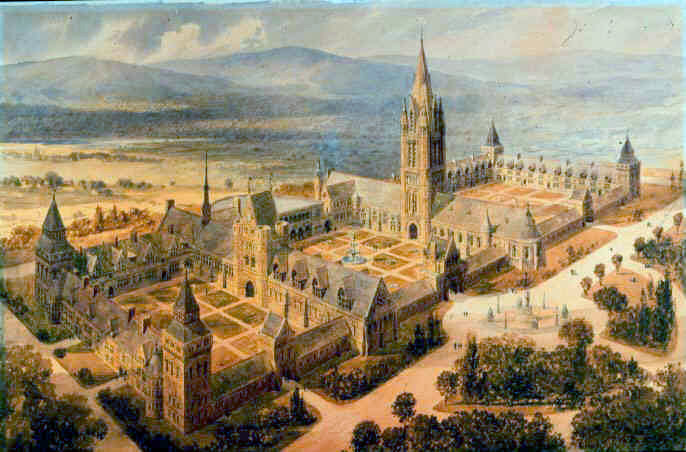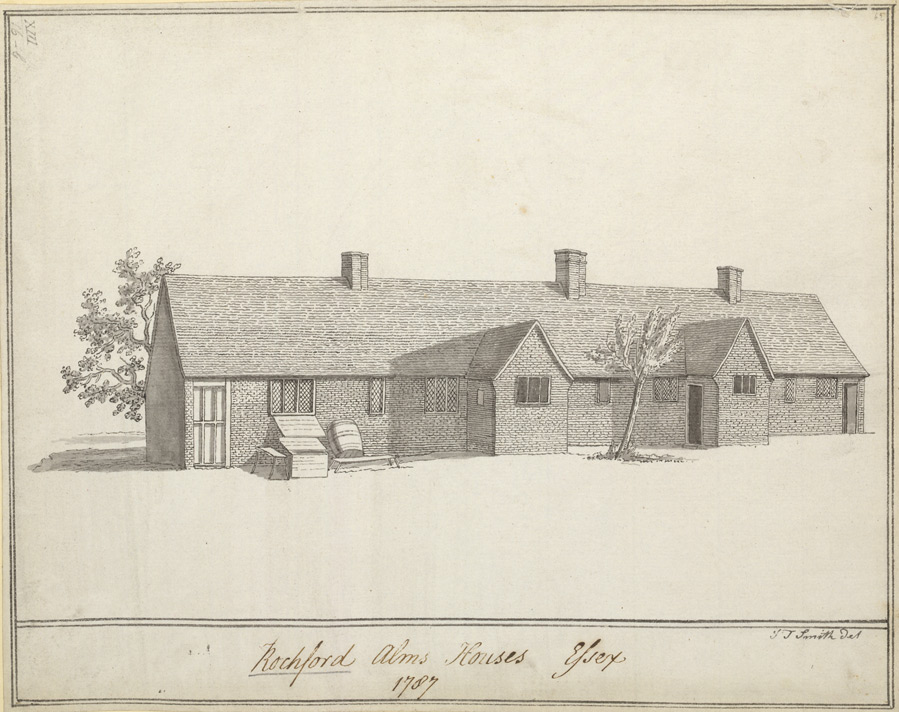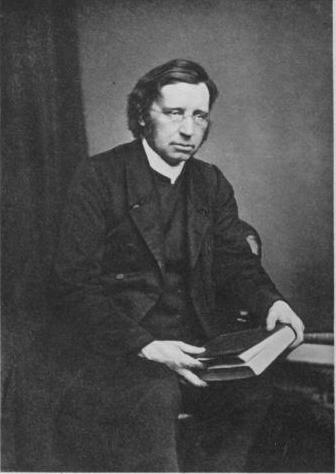|
John Mason Neale
John Mason Neale (24 January 1818 – 6 August 1866) was an English Anglican priest, scholar, and hymnwriter. He worked on and wrote a wide range of holy Christian texts, including obscure medieval hymns, both Western and Eastern. Among his most famous hymns is the 1853 '' Good King Wenceslas'', set on St. Stephen's day, known as Boxing Day in the UK. An Anglo-Catholic, Neale's works have found positive reception in high-church Anglicanism and Western Rite Orthodoxy. Life Neale was born in London on 24 January 1818, his parents being the clergyman Cornelius Neale and Susanna Neale, daughter of John Mason Good. A younger sister Elizabeth Neale (1822–1901) founded the Community of the Holy Cross. He was educated at Sherborne School, Dorset, and Trinity College, Cambridge, where (despite being said to be the best classical scholar in his year) his lack of ability in mathematics prevented him taking an honours degree. Neale was named after the Puritan cleric and hymn wr ... [...More Info...] [...Related Items...] OR: [Wikipedia] [Google] [Baidu] |
The Reverend
The Reverend (abbreviated as The Revd, The Rev'd or The Rev) is an honorific style (form of address), style given to certain (primarily Western Christian, Western) Christian clergy and Christian minister, ministers. There are sometimes differences in the way the style is used in different countries and church traditions. ''The Reverend'' is correctly called a ''style'', but is sometimes referred to as a title, form of address, or title of respect. Etymology The term is an anglicisation of the Latin , the style originally used in Latin documents in medieval Europe. It is the gerundive or future passive participle of the verb ("to respect; to revere"), meaning "[one who is] to be revered/must be respected". ''The Reverend'' is therefore equivalent to ''the Honourable'' or ''the Venerable''. Originating as a general term of respectful address in the 15th century, it became particularly associated with clergy by the 17th century, with variations associated with certain ranks in th ... [...More Info...] [...Related Items...] OR: [Wikipedia] [Google] [Baidu] |
John Mason Good
John Mason Good (25 May 1764 – 2 January 1827), English writer on medical, religious and classical subjects, was born at Epping, Essex. John Good's parents were the Nonconformist minister Revd Peter Good and Sarah Good, the daughter of another Nonconformist minister, Revd Henry Peyto of Great Coggeshall. John Mason Good was named after the Puritan clergyman and hymn writer John Mason (1645–1694), of whom his mother Sarah was a descendant. Good attended a school at Romsey kept by his father. At about the age of 15 John Good was apprenticed to a surgeon-apothecary at Gosport. In 1783 he went to London to practice his medical studies. In the autumn of 1784, he began to practice as a surgeon at Sudbury in Suffolk. There he was an acquaintance of Nathan Drake, a fellow writer and student of Shakespeare. In 1793 Good removed to London, where he entered into partnership with a surgeon and apothecary. But the partnership was soon dissolved, and to increase his income, he bega ... [...More Info...] [...Related Items...] OR: [Wikipedia] [Google] [Baidu] |
Trinity College (Connecticut)
Trinity College is a private liberal arts college in Hartford, Connecticut, United States. Founded as Washington College in 1823, it is the second-oldest college in the state of Connecticut. Coeducational since 1969, the college enrolls 2,235 students. Trinity offers 41 majors and 28 interdisciplinary minors. The college is a member of the New England Small College Athletic Conference (NESCAC). History 19th century Bishop Thomas Brownell opened "Washington College" in 1824 to nine male studentsAlbert E. Van Dusen, ''Connecticut'' (1961) pp 362-63 and the vigorous protest of Yale alumni. A 14-acre site was chosen, at the time about a half-mile from the city of Hartford. The college was renamed "Trinity College" in 1845; the original campus consisted of two Greek Revival buildings. One of the Greek Revival buildings housed a chapel, library, and lecture rooms. The other was a dormitory for the male students. In 1872, Trinity College was persuaded by the state to ... [...More Info...] [...Related Items...] OR: [Wikipedia] [Google] [Baidu] |
Restoration Of Anglican Religious Orders
Restoration is the act of restoring something to its original state. This may refer to: *Conservation and restoration of cultural property **Audio restoration **Conservation and restoration of immovable cultural property **Film restoration ** Image restoration ** Textile restoration *Ecological restoration Restoration may also refer to: Film and television * ''The Restoration'' (1909 film), a film by D.W. Griffith starring Mary Pickford * ''The Restoration'' (1910 film), an American silent short drama produced by the Thanhouser Company * ''The Restoration'' (2020 film), a Peruvian comedy film * ''Restoration'' (1995 film), a film by Michael Hoffman starring Robert Downey Jr * ''Restoration'' (2011 film), an Israeli film by Yossi Madmoni * ''Restoration'' (2016 film), an Australian science fiction thriller by Stuart Willis * ''Restoration'' (TV series), a BBC TV series * "Restoration" (''Arrow''), an episode of ''Arrow'' History *Kenmu Restoration (1333) in Japan *Portuguese Resto ... [...More Info...] [...Related Items...] OR: [Wikipedia] [Google] [Baidu] |
Society Of Saint Margaret
The Society of Saint Margaret (SSM) is an order of women in the Anglican Church. The Anglican religious order, religious order is active in England, Haiti, Sri Lanka, and the United States of America, United States and formerly Scotland. History The Sisters of St Margaret were founded in 1855 by the Reverend John Mason Neale at Rotherfield, England. The society had a difficult start. Many Anglicans in the mid-19th century were suspicious of anything suggestive of Roman Catholicism. In 1857, the founder, J. M. Neale, and some of the Nuns, Sisters were manhandled in Lewes at the funeral of Sister Amy Scobell (Amy was the name she assumed on her entry to the Convent; she was baptised Emily Ann Elizabeth). However, Neale eventually won the confidence of many who had fiercely opposed the order. As their numbers increased, they moved first to Church Lane, next to Sackville College (where Neale was Warden), with a chapel designed by George Frederick Bodley. By 1865, the foundation stone ... [...More Info...] [...Related Items...] OR: [Wikipedia] [Google] [Baidu] |
Almshouse
An almshouse (also known as a bede-house, poorhouse, or hospital) is charitable housing provided to people in a particular community, especially during the Middle Ages. They were often built for the poor of a locality, for those who had held certain jobs, or their widows, and for elderly people who could no longer pay rent. They are generally maintained by a charity or the trustees of a bequest. " Alms" are, in the Christian tradition, money or services donated to support the poor and indigent. Almshouses were originally formed as extensions of the church system and were later adapted by local officials and authorities. History Many almshouses are European Christian institutions though some are secular. Almshouses provide subsidised accommodation, often integrated with social care resources such as wardens. England Almshouses were established from the 10th century in Britain, to provide a place of residence for poor, old, and distressed people. They were sometimes called b ... [...More Info...] [...Related Items...] OR: [Wikipedia] [Google] [Baidu] |
Sackville College
Sackville College is a Jacobean almshouse in town of East Grinstead, West Sussex, England. It was founded in 1609 with money left by Robert Sackville, 2nd Earl of Dorset. Throughout its history it has provided sheltered accommodation for the elderly. Foundation Robert Sackville left £1,000 for the building and a rent charge of £330, for the endowment of a 'hospital or college' for twenty-one poor men and ten poor women, to be under the patronage and government of his heirs. This may have been an imitation of Emanuel College, Westminster, founded by his aunt, Anne Fiennes, Lady Dacre. The building of the almshouse known as 'Sackville College for the Poor' at East Grinstead was commenced about 1616 by the executors, his brother-in-law, Lord William Howard, and Sir George Rivers of Chafford. It was occupied before 1622. :s:Sackville, Robert, second Earl of Dorset (DNB00) Most of the Sackville lands were soon alienated by the founder's son, and the buyers refused to ackn ... [...More Info...] [...Related Items...] OR: [Wikipedia] [Google] [Baidu] |
Incumbent
The incumbent is the current holder of an office or position. In an election, the incumbent is the person holding or acting in the position that is up for election, regardless of whether they are seeking re-election. There may or may not be an incumbent on the ballot: the previous holder may have died, retired, resigned; they may not seek re-election, be barred from re-election due to term limits, or a new electoral division or position may have been created, at which point the office or position is regarded as vacant or open. In the United States, an election without an incumbent on the ballot is an open seat or open contest. Etymology The word "incumbent" is derived from the Latin verb ''incumbere'', literally meaning "to lean or lay upon" with the present participle stem ''incumbent-'', "leaning a variant of ''encumber,''''OED'' (1989), p. 834 while encumber is derived from the root ''cumber'', most appropriately defined: "To occupy obstructively or inconveniently; to b ... [...More Info...] [...Related Items...] OR: [Wikipedia] [Google] [Baidu] |
Cambridge Camden Society
The Cambridge Camden Society, known from 1845 (when it moved to London) as the Ecclesiological Society, Ecclesiological Society was a founded in 1839 to promote "the study of , and of Ecclesiastical Antiques". Its activities came to include publishing a monthly journal, '' The Ecclesiologist'', advising church builders on their blueprints, and advocati ... [...More Info...] [...Related Items...] OR: [Wikipedia] [Google] [Baidu] |
Oxford Movement
The Oxford Movement was a theological movement of high-church members of the Church of England which began in the 1830s and eventually developed into Anglo-Catholicism. The movement, whose original devotees were mostly associated with the University of Oxford, argued for the reinstatement of some older Christian traditions of faith and their inclusion into Anglican liturgy and theology. They thought of Anglicanism as one of three branches of the " one, holy, catholic, and apostolic" Christian Church. Many key participants subsequently converted to Roman Catholicism. Tractarianism, the movement's philosophy, was named after a series of publications, the '' Tracts for the Times'', written to promote the movement. Tractarians were often disparagingly referred to as "Newmanites" (before 1845) and "Puseyites", after two prominent Tractarians, John Henry Newman and Edward Bouverie Pusey. Other well-known Tractarians included John Keble, Charles Marriott, Richard Froude, Rob ... [...More Info...] [...Related Items...] OR: [Wikipedia] [Google] [Baidu] |
Downing College, Cambridge
Downing College is a constituent college of the University of Cambridge and currently has around 950 students. Founded in 1800, it was the only college to be added to the university between 1596 and 1869, and is often described as the oldest of the new colleges and the newest of the old. Downing College was formed "for the encouragement of the study of Law and Medicine and of the cognate subjects of Moral and Natural Science", and has developed a reputation amongst Cambridge colleges for Law and Medicine. In 2012, Downing was named one of the two most eco-friendly Cambridge colleges. History Upon the death of Sir George Downing, 3rd Baronet in 1749, the wealth left by his grandfather, Sir George Downing, 1st Baronet, who served both Cromwell and Charles II and built 10 Downing Street (a door formerly from Number 10 is in use in the college), was applied by his will. Under this will, as he had no direct issue (he was legally separated from his wife), the family fortune was ... [...More Info...] [...Related Items...] OR: [Wikipedia] [Google] [Baidu] |
John Mason (poet)
John Mason (1646?–1694) was a Calvinistic Anglican priest, poet and hymn-writer. Life He belonged to a clerical family living in the neighbourhood of Kettering and Wellingborough, Northamptonshire. He was educated first at Strixton in Northamptonshire, and was admitted a sizar of Clare Hall, Cambridge, on 16 May 1661, graduated B.A. in 1664, and M.A. in 1668. After acting as curate at Isham in Northamptonshire, he was presented on 21 October 1668 to become vicar of the village of Stantonbury in Buckinghamshire (then virtually deserted, having no vicarage, and he may really have been chaplain to Sir John Wittewronge); he left for the rectory of Water Stratford in the same county on 28 January 1674, presented by Viscountess Baltinglass, the daughter by his first marriage of Sir Peter Temple, 2nd Baronet. Under the influence of James Wrexham, a puritan preacher at Haversham, formerly vicar of Kimble Magna and of Woburn, Mason's thoughts turned to the prospect of the millenniu ... [...More Info...] [...Related Items...] OR: [Wikipedia] [Google] [Baidu] |





